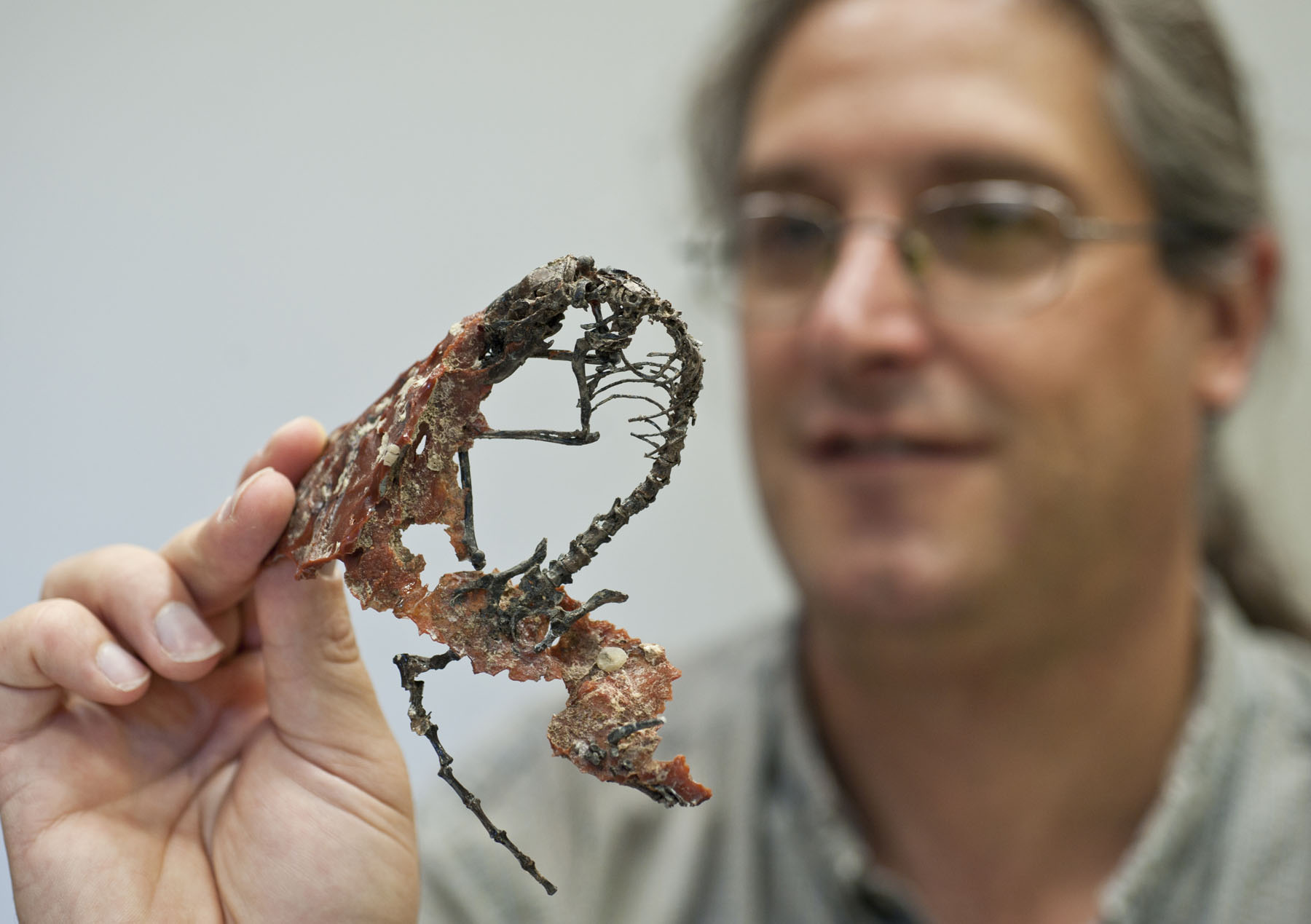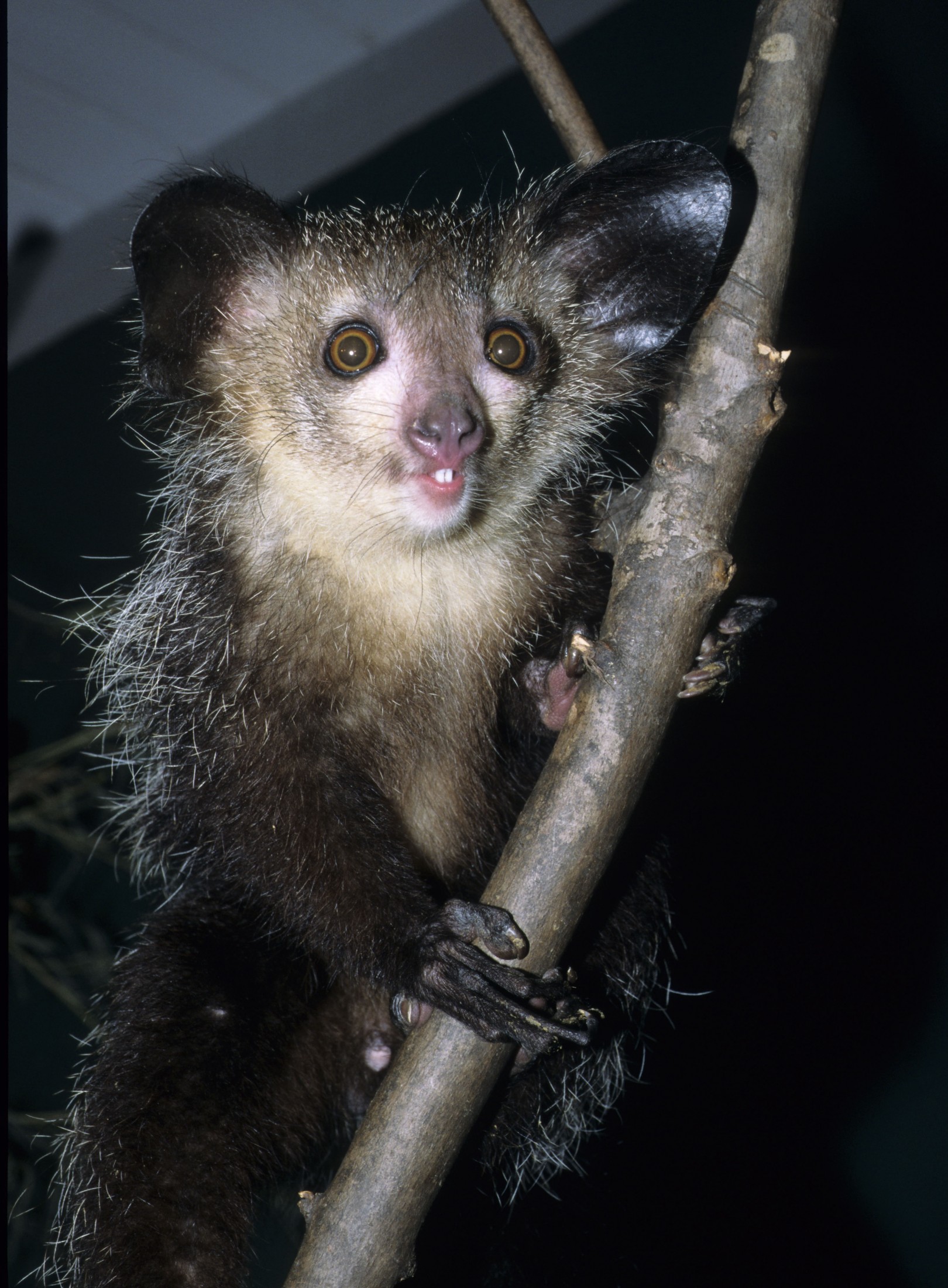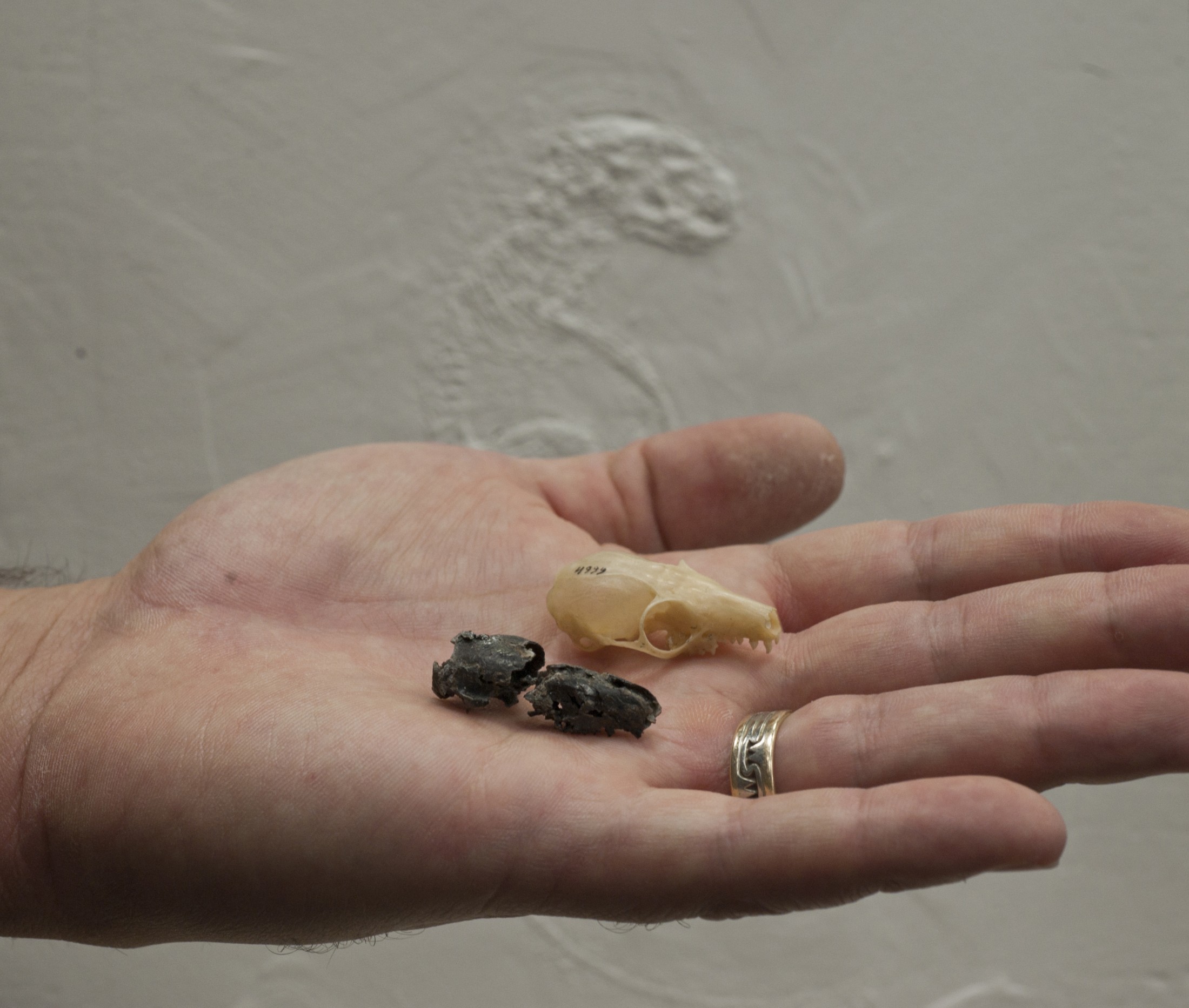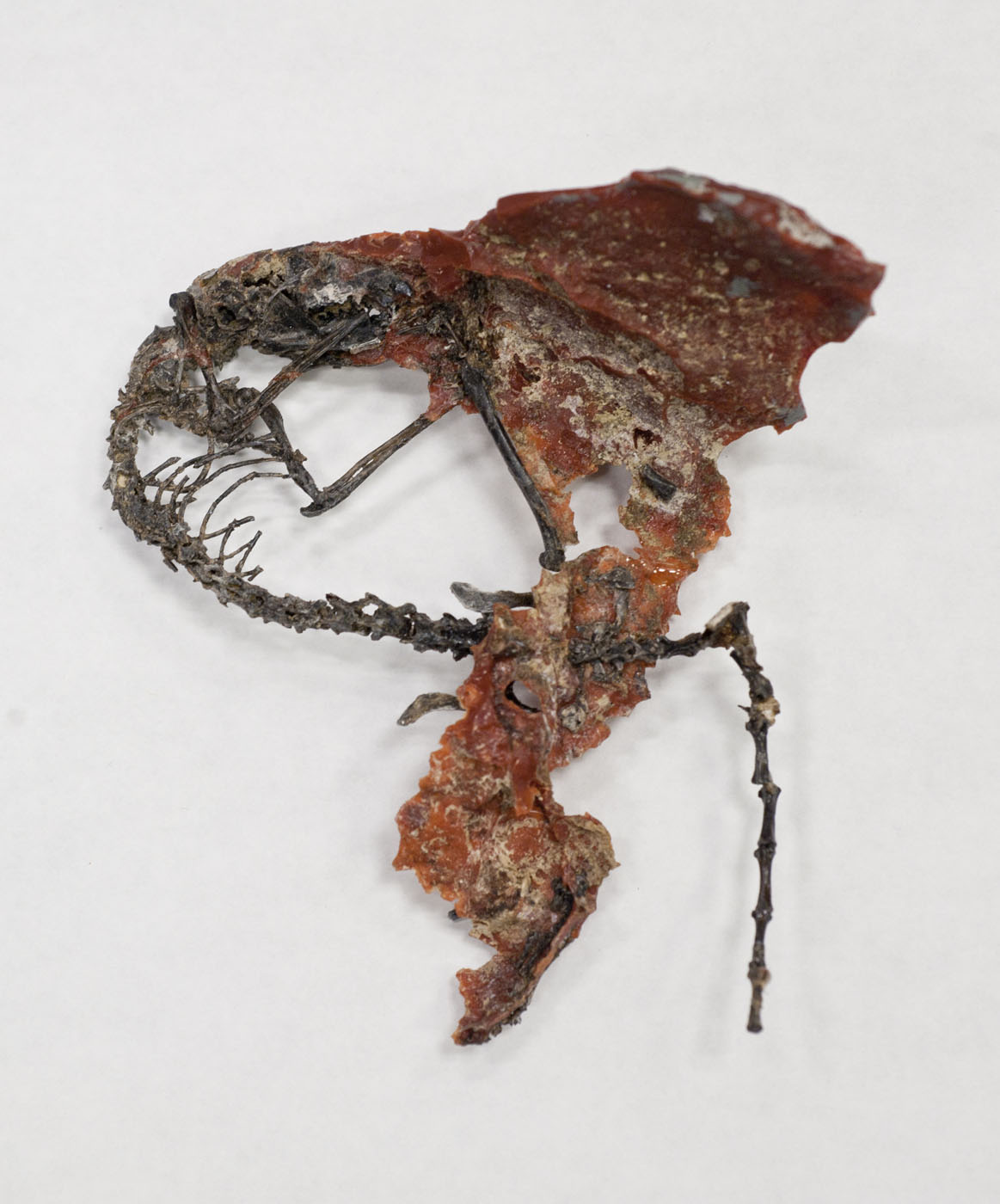For more than 100 years, scientists have debated the relationships of a bizarre family of extinct mammals called apatemyids. Distinguished by can opener-shaped upper front teeth and two unusually long fingers, the odd features of these critters have led researchers to compare them with animals from different branches on the biological tree: opossums, hedgehogs and even woodpeckers.

Florida Museum photo by Kristen Grace
So what is this animal that is so strangely adapted?
“They just don’t look definitively like anything that’s alive today,” said Florida Museum of Natural History vertebrate paleontologist Jonathan Bloch. “They have a mix of features.”
This combination of specialized traits places the family in its own biological order, but a new Florida Museum study of the cranial anatomy of a species of apatemyids, Labidolemur kayi, clarifies its ancestral relationships. A comprehensive analysis of well-preserved fossils shows the extinct mammal’s living relatives are tree shrews, flying lemurs, rodents, rabbits and primates, including humans.
“It’s a sufficiently odd animal, so we would agree that it should be classified in its own order,” Bloch said. “There are only a few examples in the history of mammals where you get such an incredibly odd ecological adaptation.”
Bloch co-authored the study, which was published in the Oct. 11, 2010, online edition of the Zoological Journal of the Linnean Society.
John Wible, curator of mammals at the Carnegie Museum of Natural History and one of the researchers who reviewed the study, said it provides valuable information for understanding the evolutionary relationships of mammals.

Duke Lemur Center photo courtesy of David Haring
“It is now clear that any assessment of the origins of primates in the future will have to include apatemyids,” Wible said. “Apatemyids are not some freakish dead-end, but significant members of our own history.”
Like a squirrel with a couple of really long fingers, L. kayi would have looked similar to the aye-aye, a lemur native to Madagascar, Bloch said. It stood less than a foot tall, was capable of jumping between trees and used percussive foraging, or tapping on trees, to locate insects. Woodpeckers use this same method for feeding, and to the speculation of scientists, the extinction of L. kayi may have coincided with the first occurrence of woodpeckers in the fossil record during the Oligocene, from about 34 to 24 million years ago.
“The idea is that potentially there might have been competition in terms of ecology between woodpeckers and apatemyids,” he said. “Or at the very least, once apatemyids were gone, woodpeckers were able to fill that ecological niche.”
Apatemyids have been preserved for tens of millions of years and are well known from Europe and North America.
Uncovering the Specimens
The fossils were recovered from freshwater limestone in the Bighorn Basin by co-author Peter Houde of New Mexico State University. Located just east of Yellowstone National Park in Wyoming, the site is traditionally one of the best places in the world for studying the evolution of mammals during the 20 million years following the extinction of the dinosaurs, Bloch said.

Florida Museum photo by Kristen Grace
“The preservation environment is good for small animals,” he said. “Even though it’s an area that’s been studied for about 150 years, within the body of the limestone, we’re finding skeletons of things we’ve never seen before.”
The process of exposing bones encased in limestone can be lengthy, depending on the size of the block and the purity of the limestone.
A limestone block is first soaked in a bath of 7 percent formic acid for around two hours, which will take off about a half millimeter of the stone. Then, it is soaked in water for twice as much time to neutralize the acid. Any bones that start peaking out of the rock are painted with protective glue and cracks are filled with epoxy. This process is repeated until a skeleton is fully revealed.
“It gets really nerve-wracking when you’re soaking this giant block with tiny bones sticking out,” said Jason Borque, a preparator in the vertebrate paleontology division of the Florida Museum.

Florida Museum photo by Kristen Grace
Thanks to the thorough preparation of the L. kayi specimens used in the study, researchers were able to produce high resolution CT scans for studying minute details of the skull. Mary Silcox, first author of the study and a research associate at the Florida Museum, said scans of the specimens began about 10 years ago, during her postdoctoral work at The Pennsylvania State University.
“It’s not like medical CT, it’s actually an industrial CT scanner,” said Silcox, an assistant professor of anthropology at the University of Toronto Scarborough. “Because this is a small animal, we needed to be able to study it at a very high resolution. The high resolution CT data were a critical part.”
Doug Boyer of Stony Brook University is also a co-author of the publication, part of the team’s larger research to understand the relationships of apatemyids to other mammals. Bloch and colleagues are currently writing a detailed analysis of L. kayi‘s skeleton.
“Because it’s such an exceptional skeleton, it’s an opportunity to do something you couldn’t normally do,” Silcox said. “To have something like this that’s preserved in three dimensions is kind of extraordinary.”
Learn more about Vertebrate Paleontology Collection at the Florida Museum.